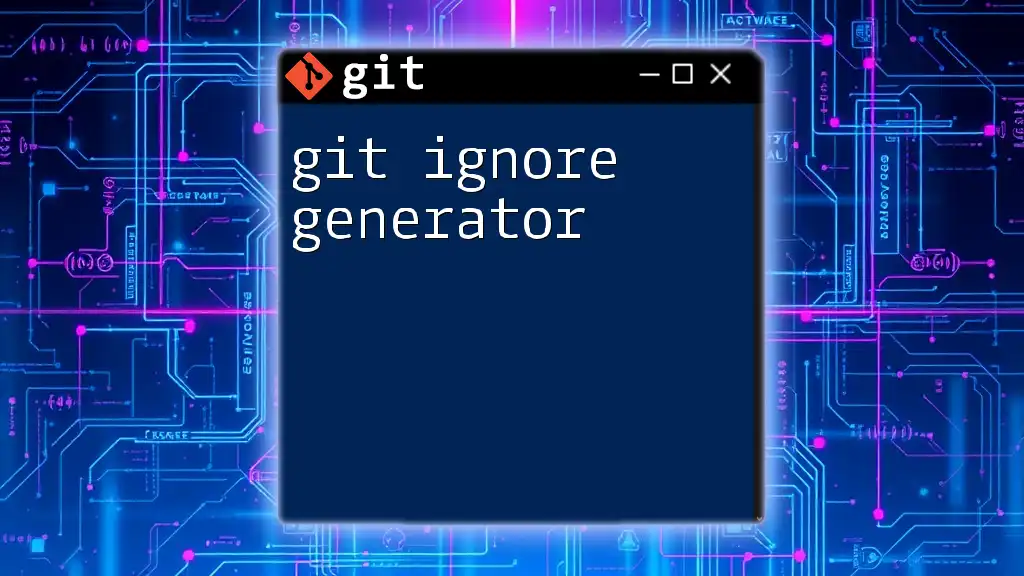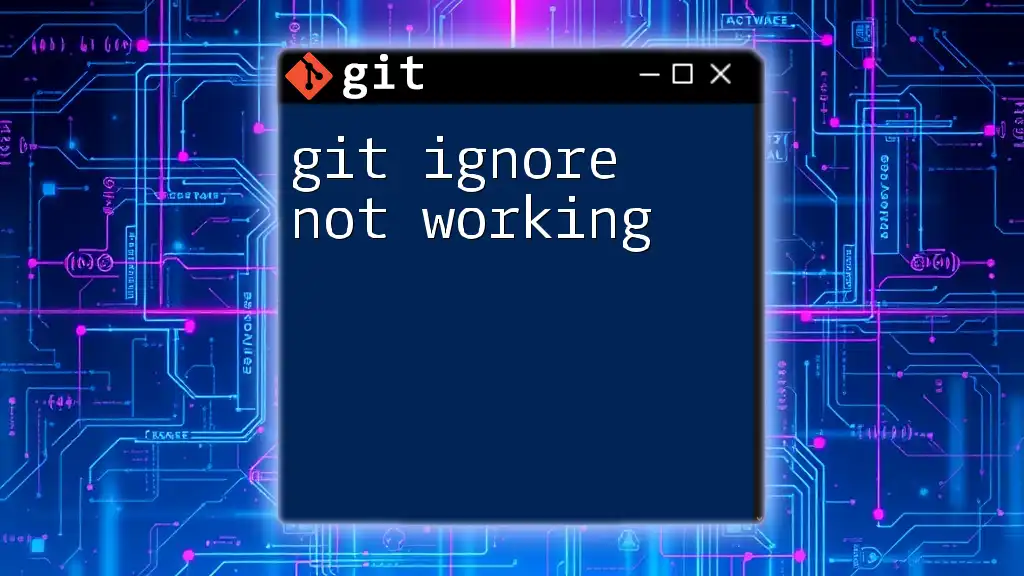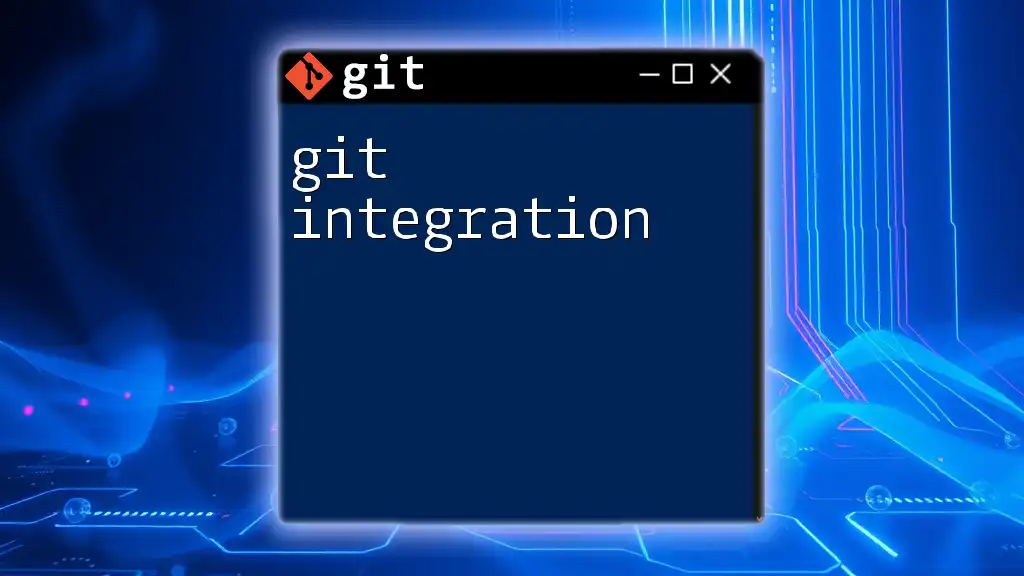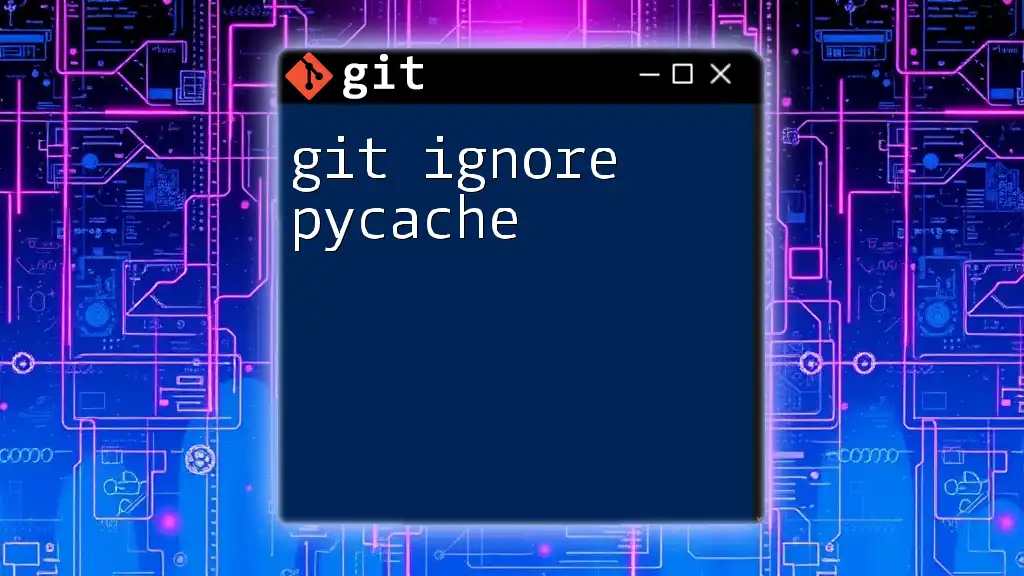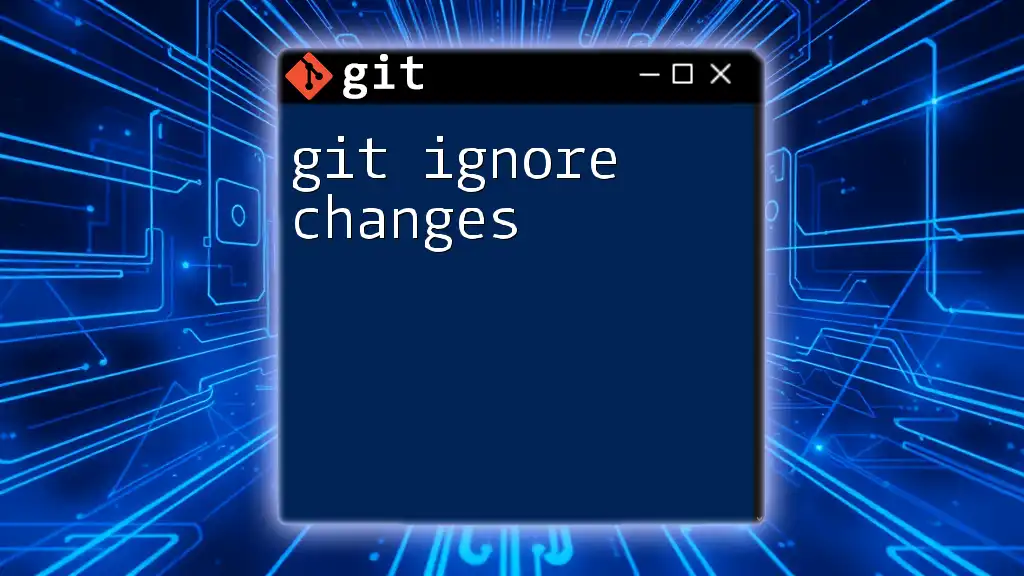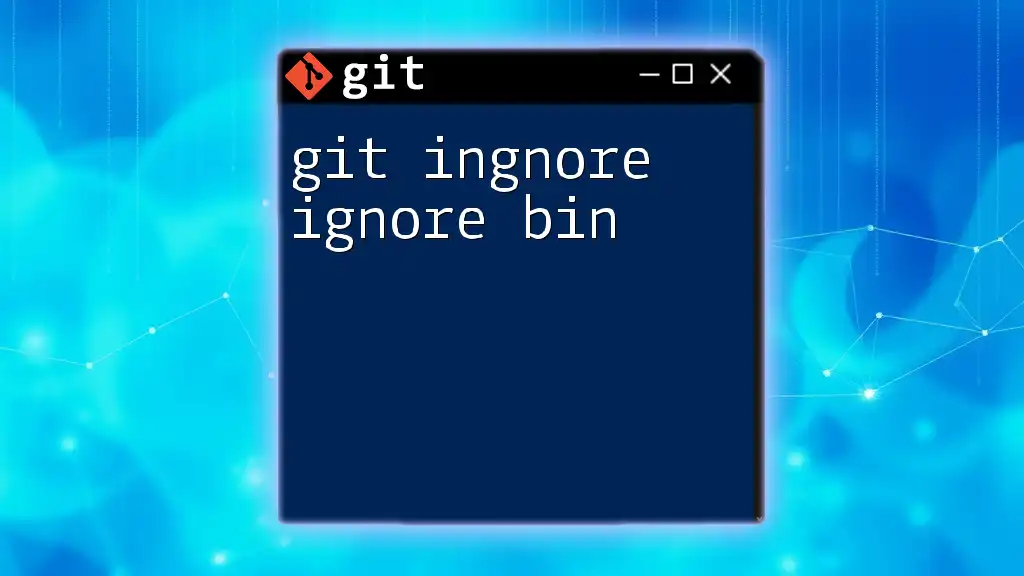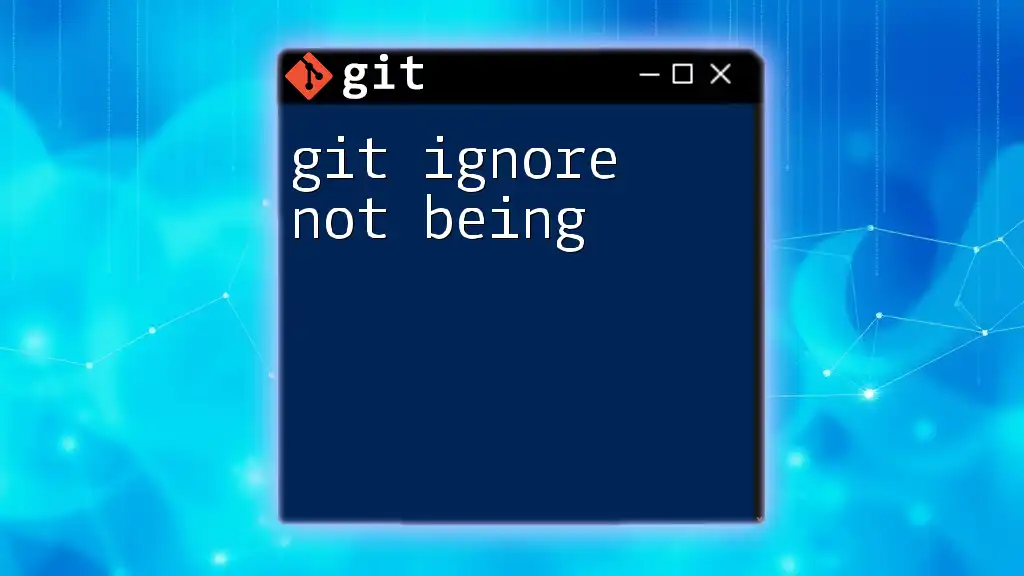A Git ignore generator helps you create a `.gitignore` file that specifies intentionally untracked files to ignore in your Git repository, ensuring that only relevant files are included in version control.
Here’s an example command to create a `.gitignore` file for a Node.js project:
echo "node_modules/
dist/
.env" > .gitignore
What is a .gitignore file?
A .gitignore file is a plain text file used in Git repositories to specify which files and directories should be ignored by version control. This means that Git will not track changes to these files, ensuring that unnecessary or sensitive files do not clutter the repository history or become inadvertently shared.
The importance of excluding certain files from version control cannot be overstated. For example, build files, temporary files created by an Integrated Development Environment (IDE), or compiled binaries should typically not be included in source control, as they can be generated from the source code and only occupy unnecessary space.

Why Use a Git Ignore Generator?
Using a git ignore generator offers numerous benefits over manually editing a .gitignore file. One of the primary advantages is accuracy. Generators often come preloaded with templates tailored to specific languages, frameworks, or development environments, reducing the risk of overlooking certain file types.
Additionally, many developers make common mistakes when creating .gitignore files. For example, they might not use the correct syntax for excluding directories or might forget to include essential patterns. A git ignore generator minimizes these errors and streamlines the process of setting up your repository.
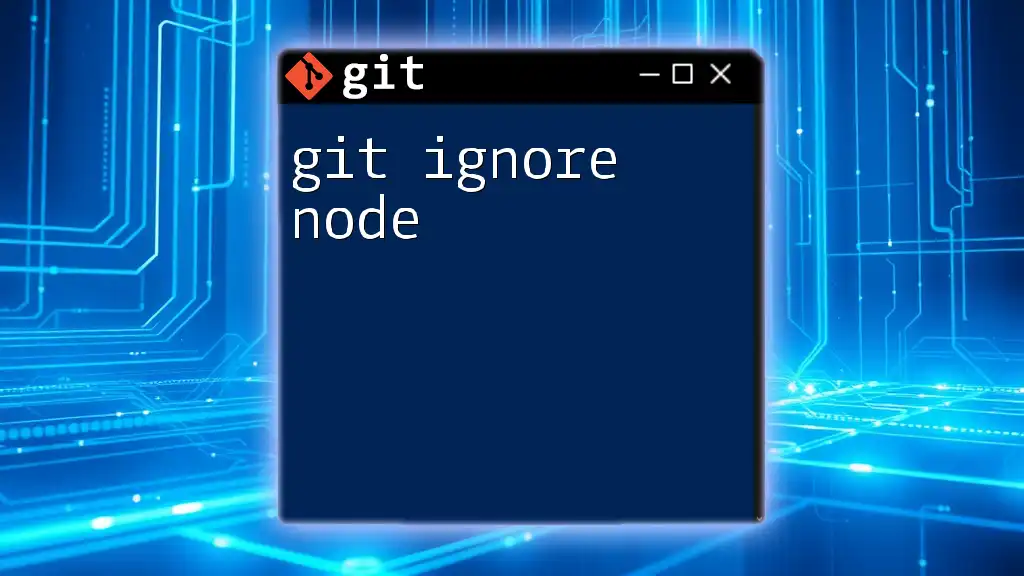
How to Use a Git Ignore Generator
Step-by-step Guide to Generating a .gitignore
-
Step 1: Navigate to a Git Ignore generator website. There are several online tools available, including GitHub’s templates and specialized sites like gitignore.io.
-
Step 2: Select the appropriate template. Depending on your project (Node.js, Python, Java, etc.), choose a corresponding template that excludes files specific to that ecosystem.
-
Step 3: Customize the generated file. After selecting a template, you may need to add or remove entries based on your project’s specific needs.
-
Step 4: Download or copy the .gitignore content. Once you have your .gitignore set up, either download it as a file or copy the text to create your own.
Popular Git Ignore Generators
GitHub’s Git Ignore Templates
GitHub has a dedicated repository for Git Ignore templates, which is a great resource. You can access it at <https://github.com/github/gitignore>. Here, you’ll find ready-made templates for various technologies.
gitignore.io
gitignore.io is another excellent tool that allows you to generate custom .gitignore files. Just visit the site, enter the technologies your project uses, and it will create a .gitignore file tailored to your specifications.
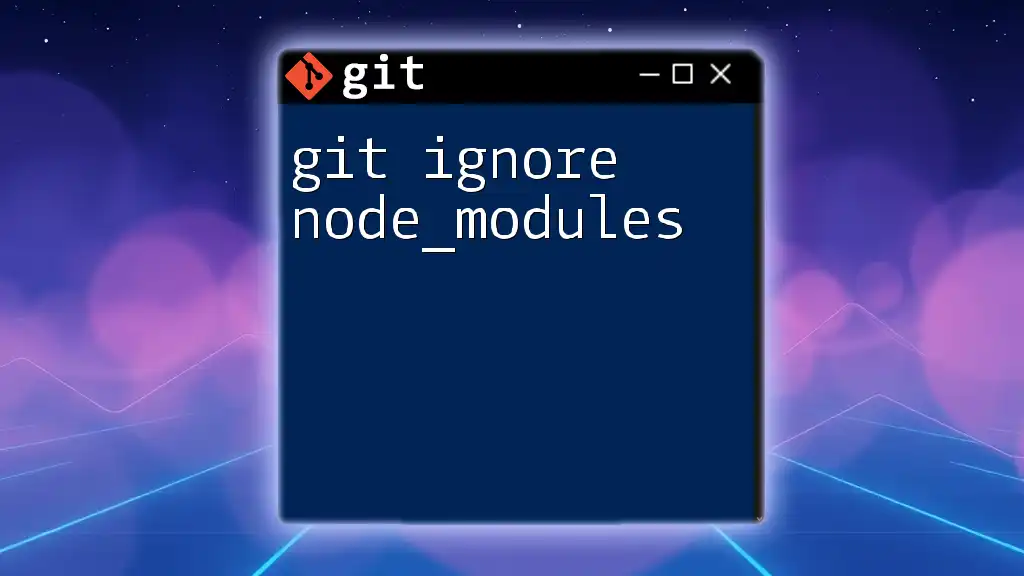
Customizing Your .gitignore File
Understanding Syntax and Patterns
Understanding the syntax and patterns used in a .gitignore file is crucial for its effective use.
-
Ignoring files by name: You can easily exclude specific files by writing their names in the .gitignore. For example:
# Ignore a specific file secret.txt -
Ignoring directories: If you want to exclude an entire directory, simply append a `/` to the directory name:
# Ignore a specific directory temp/ -
Wildcard characters: Wildcards allow for more flexibility. The `*` character represents any number of characters, while `?` represents a single character:
# Ignore all .log files *.log # Ignore any 'temp' directory regardless of its location **/temp/
Advanced .gitignore Tips
Negation Patterns
Sometimes you might want to keep one specific file in a directory that is otherwise ignored. For this, you can use negation patterns by adding an exclamation mark before the file name:
# Ignore all .log files but keep important.log
*.log
!important.log
This method ensures that while all log files get ignored, `important.log` can still be tracked by Git.
Conditional Exclusions
Creating conditional rules in a .gitignore can be beneficial, particularly when managing larger projects. You can set rules based on directory structures or file types. For example:
# Ignore all .tmp files in any directory except 'production'
*.tmp
!production/*.tmp
By using the above structure, all files with a `.tmp` extension will be ignored unless they are located in the `production` directory.
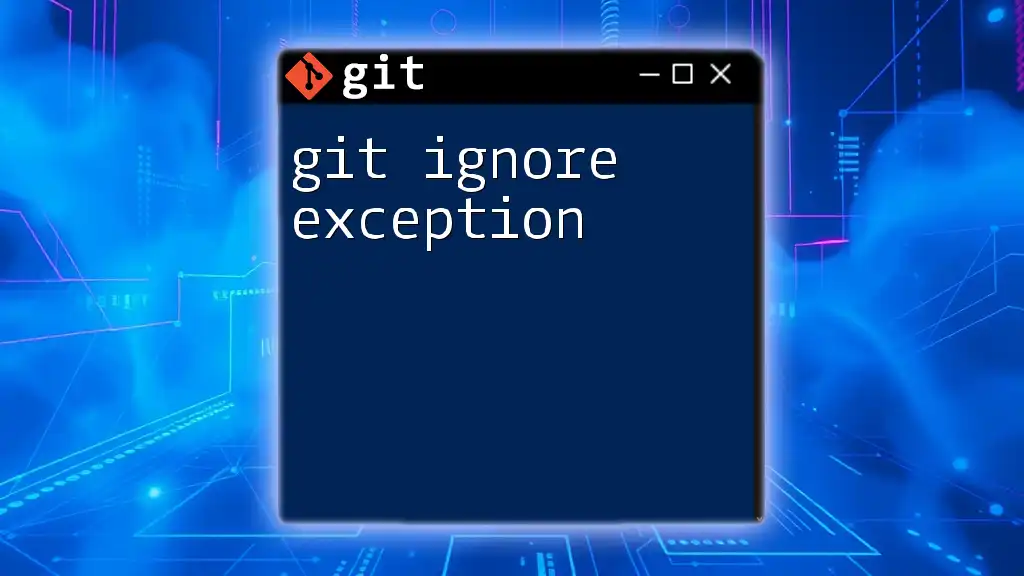
Common Use Cases for Git Ignore Files
Language-Specific .gitignore Files
Node.js
For Node.js projects, a typical .gitignore file might include entries like:
# Node modules
node_modules/
# Log files
logs/
*.log
Excluding the `node_modules/` directory is essential, as it can contain thousands of files generated during package installation which can be recreated easily in any environment.
Python
A sample .gitignore for a Python project could look like:
# Python bytecode
__pycache__/
*.py[cod]
# Virtual environment
venv/
These entries ensure that compiled bytecode and virtual environments do not bloat the repository.
Java
For Java projects, a .gitignore file might include:
# Compiled class files
*.class
# Logs
*.log
# Dependency folders
/lib/
Excluding `.class` files and log directories helps keep the repo clean and manageable.
IDE and OS Specific .gitignore Files
VSCode
If you’re using Visual Studio Code, your .gitignore might need to include:
# VSCode settings
.vscode/
This helps manage settings that may not be relevant to other developers working on the same project.
macOS and Windows
It’s also a good idea to include entries that are specific to the operating systems:
# macOS
.DS_Store
# Windows
Thumbs.db
This helps in maintaining consistency across different environments and preventing unnecessary files from being tracked.
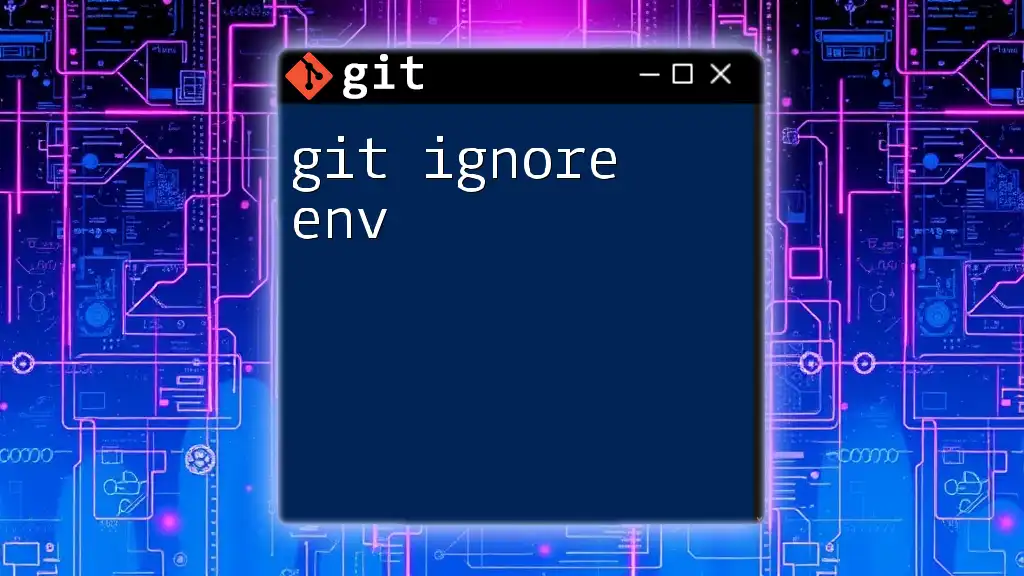
Troubleshooting Common Issues
Dealing with .gitignore Not Working
Even after creating a perfect .gitignore file, you might encounter situations where it doesn’t seem to work. Common reasons include:
- The files are already being tracked by Git. To resolve this, you need to untrack files. You can do so using:
git rm -r --cached <file_or_directory>
- The syntax may be incorrect. Revisiting the rules and ensuring proper syntax can effectively mitigate these issues.
Cleaning Up Untracked Files Post-Ignoring
After making modifications to your .gitignore, you might need to clean up any previously tracked files that should now be ignored. Use the command:
git rm -r --cached <file_or_directory>
This command untracks the files, ensuring they are no longer included in Git's version control.

Conclusion
In summary, the significance of maintaining a .gitignore file cannot be overstated. It plays a crucial role in keeping your repository clean and efficiently managing the files that are important to your project. By utilizing a git ignore generator, you can streamline the process of creating and customizing your .gitignore files, eliminating common pitfalls and ensuring a smooth development experience.

Call to Action
Start exploring various Git Ignore generators today and see how they can enhance your workflow. Don’t forget to subscribe to our company for more insightful tutorials and tips on mastering Git and its capabilities!
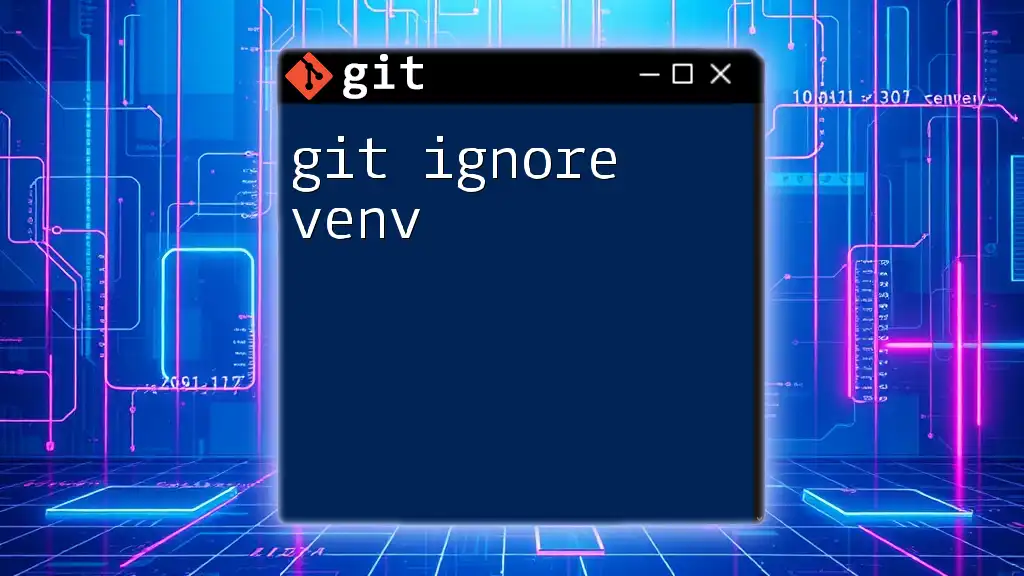
Resources and Further Reading
- [Git Ignore official documentation](https://git-scm.com/docs/gitignore)
- [GitHub Git Ignore Templates](https://github.com/github/gitignore)
- [gitignore.io](https://www.toptal.com/developers/gitignore)

